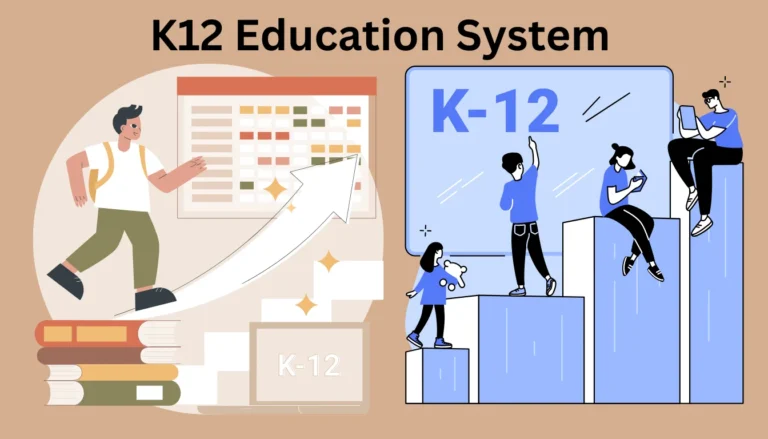Crafting an Engaging Home Learning Space for Success
Creating an engaging home learning environment is crucial for every student’s success, especially in today’s evolving education landscape. At ProdigyGame, we understand the challenges families face in balancing education with daily life, which is why we’re here to guide you in setting up a space that fosters growth and learning.
Virtual school testing has become a cornerstone of modern education, offering flexibility and equal opportunities for all students. However, traditional testing environments can create logistical challenges, making it difficult for families to manage. That’s why we’re advocating for secure online testing solutions that provide a comfortable and familiar setting for students to thrive.
By establishing a structured routine and utilizing digital tools, you can create a learning environment that supports your child’s educational journey. Our resources are designed to empower families with the flexibility they need, ensuring that every student can achieve their full potential.
Learn more about how to create an effective home learning environment by visiting our blog: virtual learning tips for parents.
Designing a Productive Home Learning Environment
Setting up a home learning space that fosters productivity is essential for student success. A well-organized environment helps students stay focused and motivated, which is vital for their academic progress.
Creating a Designated Workspace
A dedicated learning area is crucial for minimizing distractions and maximizing comfort. Consider a quiet corner away from the main household activity. Ensure the space is well-lit, preferably with natural light, as studies show it enhances satisfaction and performance.
Add elements like houseplants to boost emotional well-being, and maintain a comfortable temperature for optimal focus. Personalizing the space according to your child’s preferences can increase motivation by up to 25%.
Balancing Structure and Flexibility
Establishing a routine provides stability, yet flexibility is key. Incorporate regular breaks to enhance concentration. A structured schedule can improve academic performance and reduce anxiety, while allowing some adaptability ensures the environment remains dynamic.
Leveraging Tools and Resources
Digital tools like interactive modules and video conferencing can enhance the learning experience. Utilize platforms that offer real-time progress tracking and assignment management. Ergonomic workstations can improve focus and productivity, with proper seating and desk height boosting efficiency by 20%.
- Use tools like Jotform for quizzes and tests.
- Implement automated course content to save time.
- Incorporate engaging elements such as educational games.
A well-thought-out setting directly impacts academic progress and overall success. By combining these strategies, you can create a learning environment that supports your child’s educational journey and fosters growth.
Virtual School Testing: What Parents Need to Know
Understanding the remote testing model is key for parents supporting their children in virtual education. This approach uses technology to enable secure online assessments, ensuring students can take tests from the comfort of their home learning environments.
Understanding the Remote Testing Model
Remote testing is conducted through live proctoring via web conferencing tools, ensuring security and fairness. States like California and Idaho have successfully implemented this method, allowing students to test remotely without the need for travel. This reduces stress and logistical challenges for families, especially those with multiple children or those living in rural areas.
Benefits and Challenges of Online Testing
The benefits are clear: increased flexibility, reduced travel stress, and a familiar testing environment. However, challenges like stable internet connections and reliable devices must be addressed. Parents can help by ensuring their child has a quiet, well-equipped space and by familiarizing them with the online platform beforehand.
Research shows that remote testing can lead to higher academic achievement and reduced anxiety. For example, a study by the Education Freedom Institute found that students who took tests at home performed better and experienced less stress compared to traditional in-person testing.
Supporting Your Child’s Online Education Journey
Creating a nurturing environment for your child’s online education requires more than just a dedicated space. It demands active involvement, patience, and a willingness to adapt. As a parent, your role is pivotal in guiding your child through this journey, ensuring they stay motivated and focused.
Building an Effective Daily Schedule
A well-structured routine is the backbone of successful online learning. Start by creating a visible schedule at home, outlining school hours, breaks, and family time. Use tools like parent portals to stay updated on assignments and communicate regularly with teachers. Consistency is key—establish a regular wake-up time and dedicated study area to help your child differentiate between school and leisure.
Modeling Hard Work and Persistence
Children often mimic the behaviors they observe. Share your own experiences of overcoming challenges and demonstrate persistence in your daily tasks. This not only teaches them resilience but also shows the value of hard work. Collaborate with teachers to adjust schedules and provide constructive feedback on assignments, reinforcing the importance of effort and dedication.
Small adjustments in daily management can significantly impact both learning outcomes and family well-being. By maintaining open communication and fostering a structured yet flexible environment, you empower your child to thrive in their online education journey.
Conclusion
As we conclude, remember that fostering an engaging home learning environment is a cornerstone of every student’s success. By creating a structured routine, utilizing digital tools, and maintaining open communication, you empower your child to thrive in their educational journey. The shift towards online education has shown us the importance of flexibility and adaptability, allowing families to balance learning with daily life seamlessly.
The advantages of remote testing are clear, offering a secure and familiar setting that reduces logistical challenges. Studies have shown that students often perform better and experience less anxiety in such environments. By providing a quiet, well-equipped space and familiarizing your child with online platforms, you can help them achieve their full potential.
As a parent, your role in guiding your child’s education is pivotal. Modeling hard work, maintaining a structured schedule, and leveraging digital tools can significantly impact their academic progress. Remember, every small adjustment in daily routines can lead to meaningful improvements in learning outcomes.
We are committed to making high-quality education accessible to every child. By working together as a community of parents, educators, and students, we can overcome challenges and create a supportive environment that fosters growth. Visit our online school education page to explore more resources and insights on creating an effective learning environment.
Your feedback and experiences are invaluable in shaping the future of home learning. Let’s continue to collaborate and innovate, ensuring every child has the opportunity to succeed. Together, we can build a brighter future for education.







